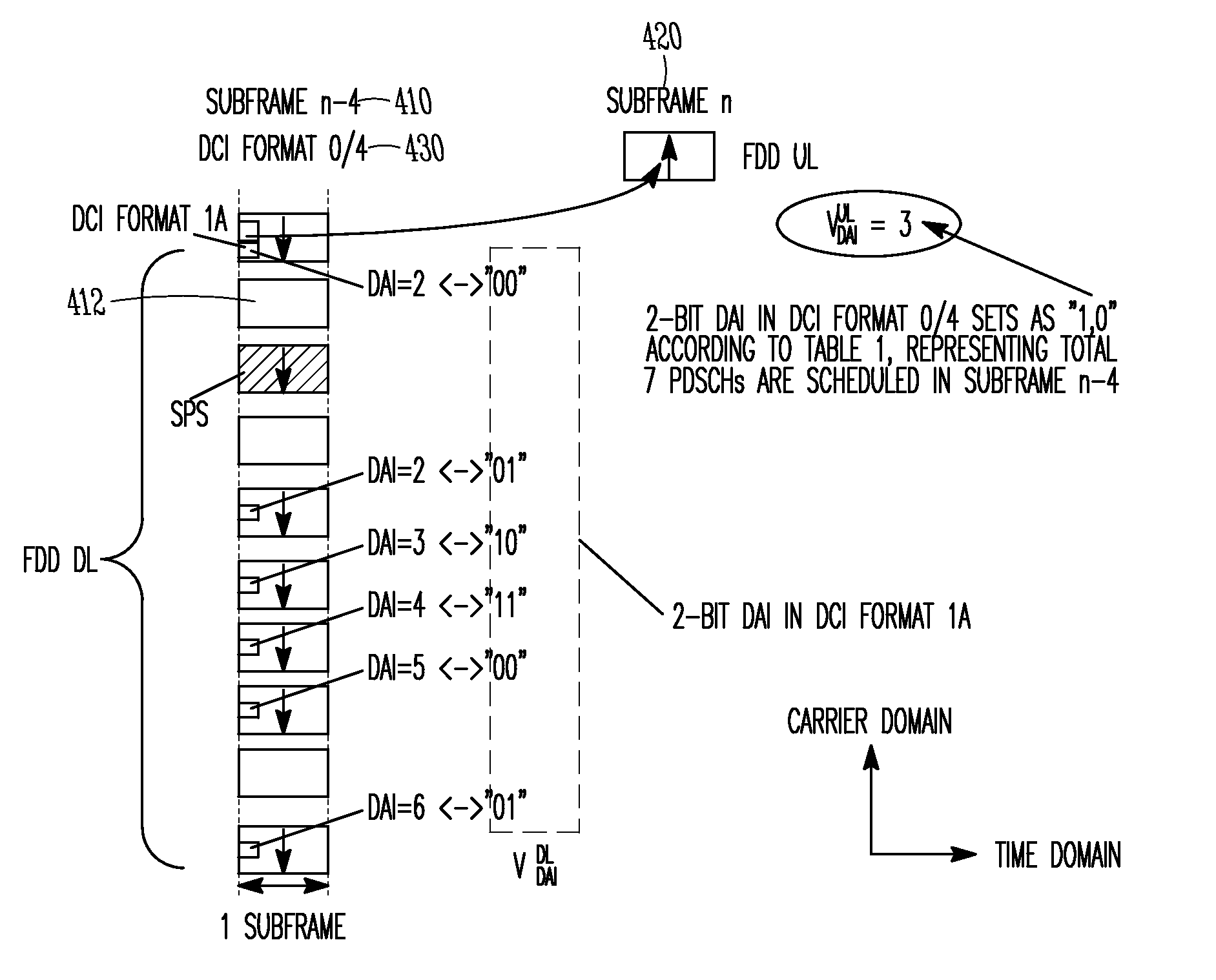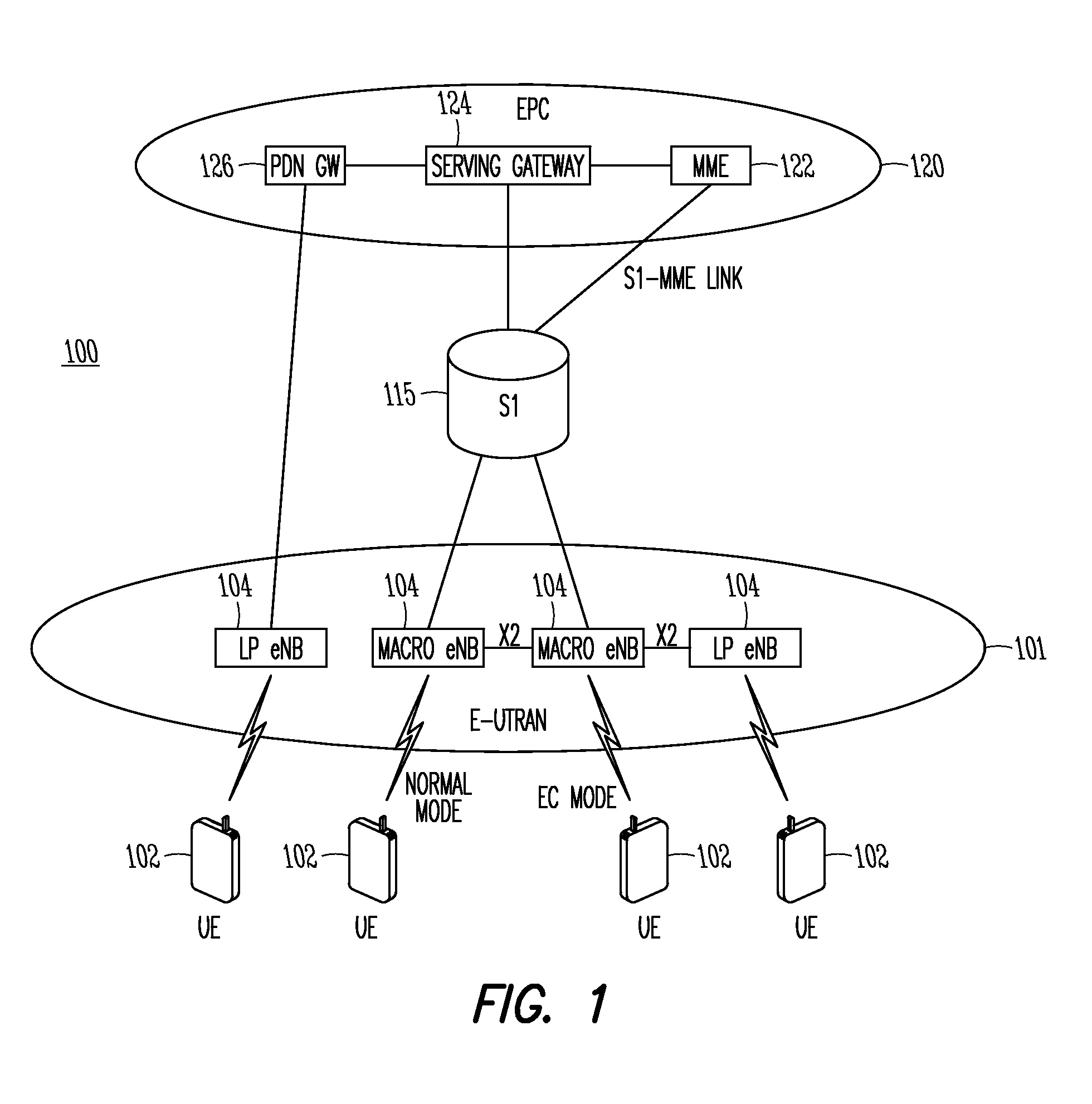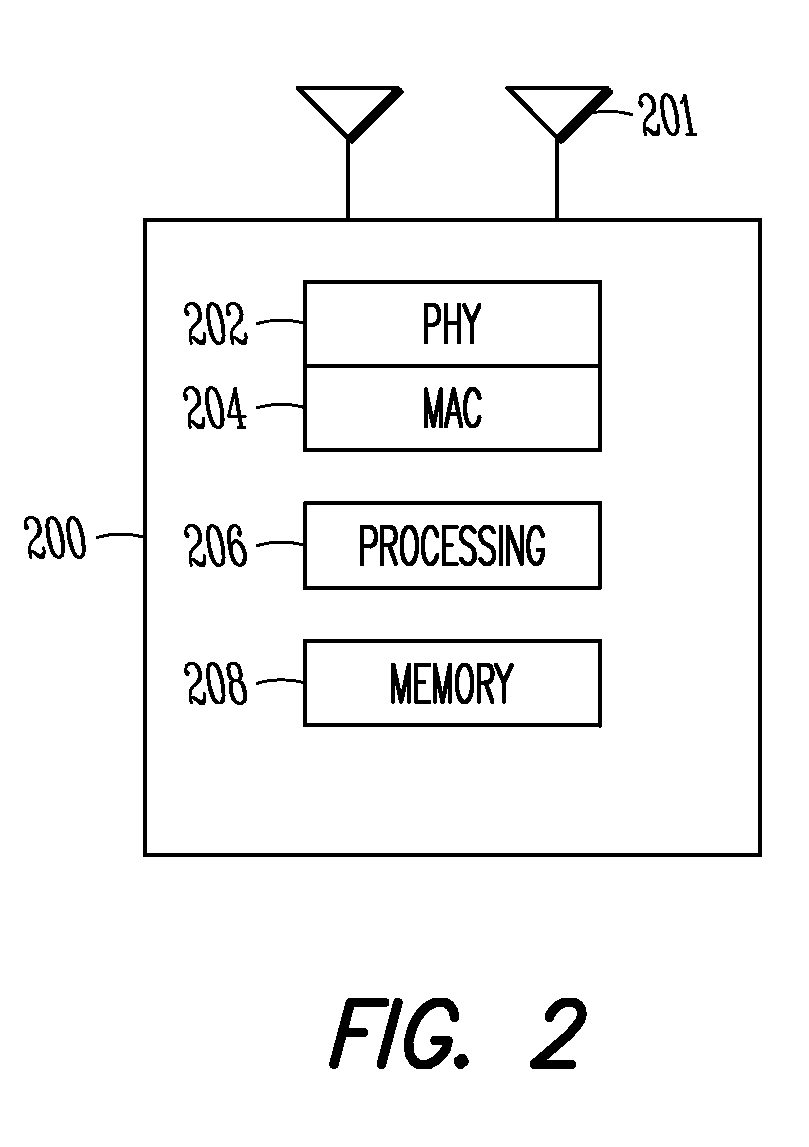Devices and methods for harq-ack feedback scheme on pusch in wireless communication systems
a wireless communication system and feedback scheme technology, applied in wireless communication, duplex signal operation, wireless communication services, etc., can solve the problems of reducing the performance of pusch, harq-ack response may take up a large amount of overhead, and existing harq-ack codebook size determination methods may not be able to minimize harq-ack overhead
- Summary
- Abstract
- Description
- Claims
- Application Information
AI Technical Summary
Benefits of technology
Problems solved by technology
Method used
Image
Examples
example 1
[0073 can include subject matter, such as apparatus of a user equipment device, comprising processing circuitry configured to: configure a transceiver, configured to transmit and receive signals from an enhanced Node-B (eNB), to receive a subframe containing a physical downlink control channel (PDCCH) formed in accordance with a first Downlink Control Information (DCI) format, the DCI format comprising a first Downlink Assignment Index (DAI) field for Time Division Duplexed (TDD) and Frequency Division Duplexed (FDD) operation; determine, dependent on the DAI, a number and order of Hybrid Automatic Repeat Request-Acknowledgment (HARQ-ACK) bits to be transmitted on a Physical Uplink Shared Channel (PUSCH); and configure the transceiver to transmit a PUSCH containing the generated HARQ-ACK bits.
[0074]Example 2 can include the subject matter of Example 1 and optionally include that the DCI format comprises at least one of a DCI format used for PUSCH scheduling and a DCI format used for...
example 3
[0075 can include the subject matter of one or any combination of Examples 1-2 and optionally include that the DCI format further comprises a second DAI field for TDD operation rather than FDD operation.
example 4
[0076 can include the subject matter of one or any combination of Examples 1-3 and optionally include that the first DCI format comprises the first DAI and a second DCI format used in a Third Generation Partnership Project Long Term Evolution (3GPP LTE) Release 12 system, the second DCI format comprising the second DAI rather than the first DAI.
PUM
 Login to View More
Login to View More Abstract
Description
Claims
Application Information
 Login to View More
Login to View More - R&D
- Intellectual Property
- Life Sciences
- Materials
- Tech Scout
- Unparalleled Data Quality
- Higher Quality Content
- 60% Fewer Hallucinations
Browse by: Latest US Patents, China's latest patents, Technical Efficacy Thesaurus, Application Domain, Technology Topic, Popular Technical Reports.
© 2025 PatSnap. All rights reserved.Legal|Privacy policy|Modern Slavery Act Transparency Statement|Sitemap|About US| Contact US: help@patsnap.com



